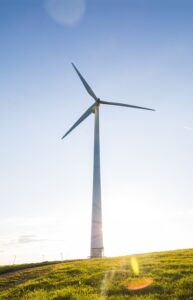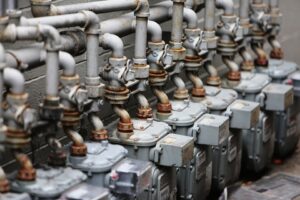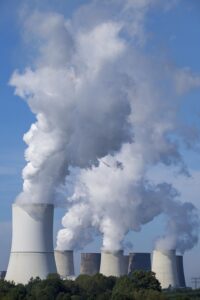Fiber Bragg gratings stand out among other fiber optic sensors as the most developed and prominent technology for the measurement of strain, vibrations, temperature, and pressure. FBG sensors have attracted significant interest in structural health monitoring due to numerous advantageous properties:
- immunity to electromagnetic interference;
- intrinsic fire safety;
- low invasiveness;
- minimum aesthetic impact;
- possibility to send the data remotely using the same sensing fiber.
There are multiple sensing advantages that FBG sensors provide. First of all, FBG sensors perform with an excellent balance between complexity and performance, which is one of the most attractive qualities of fiber Bragg grating sensors for structural health monitoring. Secondly, FBG sensors are able to work in low signal-to-noise ratios better than other optic sensors. Moreover, fiber Bragg grating sensors are predictable and less dependent on the temperature of the surrounding environment, as well as are well-suited for multiplexed optical sensor networks.
Over the past decade, structural health monitoring has attracted a lot of attention as modern technology develops, and new materials and compounds are used in the construction of buildings and structures. Structural health monitoring involves the collection and analysis of information obtained through measurements of the structure. The results of data analysis are used to assess the damage and evaluate the performance of the structure under harsh conditions.
FBG sensor structural health monitoring has become an important tool for assessing the performance of different structures and measurements of temperature, strain, pressure, displacement, etc.
Fiber optic strain gauge is welded directly to the surface of the metal structure (pipes, beams, etc.), and it has a protective silicone cover. Fiber optic strain sensors are durable and stable, widely used for civil engineering constructions, particularly they reinforce concrete structures exceptionally well.
Fiber Bragg Grating strain sensors demonstrate lots of advantages compared to the regular electrical strain gauges. Namely, they are immune to electromagnetic interference and power shortages. Compact size devices provide the most accurate measurements. FBGs are, literally, the best strain sensors right now.
If you would like to purchase Optromix FBG Strain Sensors, please contact us: info@optromix.com or +1 617 558 9858


 A traditional way of monitoring structural health is through the use of piezoelectric transducers; these devices convert pressure to an electric voltage. Transducers are reliable and accurate in most working conditions except in cases of corrosive environments or under high temperatures, above 300° Celsius. Harsh conditions influence reliability. accuracy, and usefulness of transducers in a negative way.
A traditional way of monitoring structural health is through the use of piezoelectric transducers; these devices convert pressure to an electric voltage. Transducers are reliable and accurate in most working conditions except in cases of corrosive environments or under high temperatures, above 300° Celsius. Harsh conditions influence reliability. accuracy, and usefulness of transducers in a negative way. The increased demand for energy due to the growing population has forced the industry to develop new sustainable ways to produce energy. Among new and developing energy technologies are wind turbines. They are widely used to produce energy in many parts of the world. However, there are multiple concerns that are yet to be solved, one of them has been the lack of effective monitoring devices and techniques.
The increased demand for energy due to the growing population has forced the industry to develop new sustainable ways to produce energy. Among new and developing energy technologies are wind turbines. They are widely used to produce energy in many parts of the world. However, there are multiple concerns that are yet to be solved, one of them has been the lack of effective monitoring devices and techniques.  The demand for data is growing exponentially, piling pressure on networks to deliver more data, faster, over longer distances.
The demand for data is growing exponentially, piling pressure on networks to deliver more data, faster, over longer distances.  Recent events in the nuclear industry have shown the weaknesses in the control of the critical systems that ensure the safety of the nuclear plant. The extreme and accidental conditions, such as high temperatures and high levels of radiation sabotage the security of nuclear power plants, leading to major disasters. The main issue for the nuclear industry is to enhance the security of existing nuclear power plants and improve the design of the future ones. In the case of emergency or accidental conditions in nuclear reactors the following thermodynamic parameters need to be known in order to facilitate appropriate actions: temperature, pressure, water level, radiation level. The accuracy of the obtained information directly influences the decisions made by the operators. The monitoring instruments used inside the nuclear fuel pools need to better withstand severe conditions that occur during malfunctions and accidents, namely high temperatures and high levels of radiation. The strict safety regulations have pushed the fiber optic market to develop sensors based on optical fibers. Optical fiber sensors, like
Recent events in the nuclear industry have shown the weaknesses in the control of the critical systems that ensure the safety of the nuclear plant. The extreme and accidental conditions, such as high temperatures and high levels of radiation sabotage the security of nuclear power plants, leading to major disasters. The main issue for the nuclear industry is to enhance the security of existing nuclear power plants and improve the design of the future ones. In the case of emergency or accidental conditions in nuclear reactors the following thermodynamic parameters need to be known in order to facilitate appropriate actions: temperature, pressure, water level, radiation level. The accuracy of the obtained information directly influences the decisions made by the operators. The monitoring instruments used inside the nuclear fuel pools need to better withstand severe conditions that occur during malfunctions and accidents, namely high temperatures and high levels of radiation. The strict safety regulations have pushed the fiber optic market to develop sensors based on optical fibers. Optical fiber sensors, like  Strain measurement is imperative during prototype design and testing. Strain measurements ensure that materials perform as they should and that the equipment is safe and durable. Measuring strain is crucial for testing complex structures, like aircraft, turbines, etc. There are multiple ways in which stress can be measured; however, it is widely accepted that
Strain measurement is imperative during prototype design and testing. Strain measurements ensure that materials perform as they should and that the equipment is safe and durable. Measuring strain is crucial for testing complex structures, like aircraft, turbines, etc. There are multiple ways in which stress can be measured; however, it is widely accepted that All engineering infrastructures undergo aging. The damage that appears over time is a consequence of the loads applied to them, therefore regular maintenance actions are required in order to predict the lifetime of these structures and lengthen it, which, in turn, will aid in avoiding catastrophic failures. Aviation-related infrastructures demand the highest levels of damage detection as these structures are overwhelmingly built according to a damage-tolerant principle. The structures for aerospace are designed to withstand damages with certain characteristics. Damage-tolerant design involves considerable effort for structure inspection. The inspections and maintenance tasks need to be periodic and scheduled; these are essential for safe and efficient operations.
All engineering infrastructures undergo aging. The damage that appears over time is a consequence of the loads applied to them, therefore regular maintenance actions are required in order to predict the lifetime of these structures and lengthen it, which, in turn, will aid in avoiding catastrophic failures. Aviation-related infrastructures demand the highest levels of damage detection as these structures are overwhelmingly built according to a damage-tolerant principle. The structures for aerospace are designed to withstand damages with certain characteristics. Damage-tolerant design involves considerable effort for structure inspection. The inspections and maintenance tasks need to be periodic and scheduled; these are essential for safe and efficient operations.